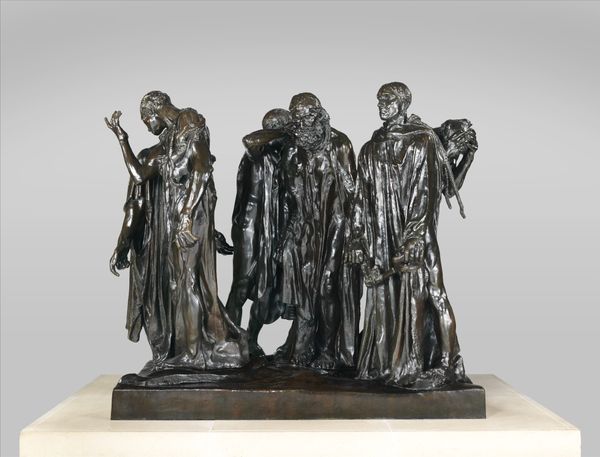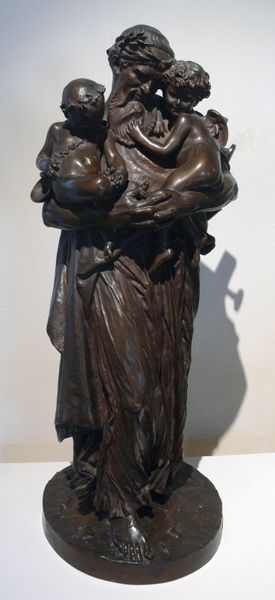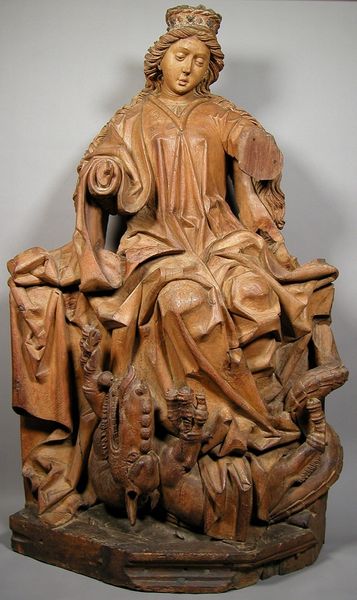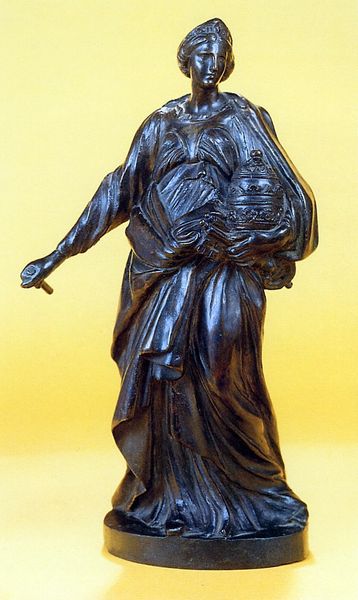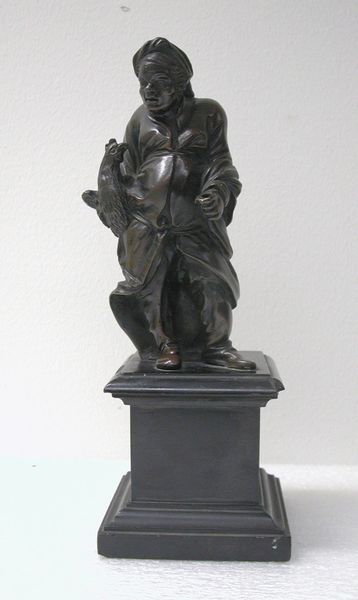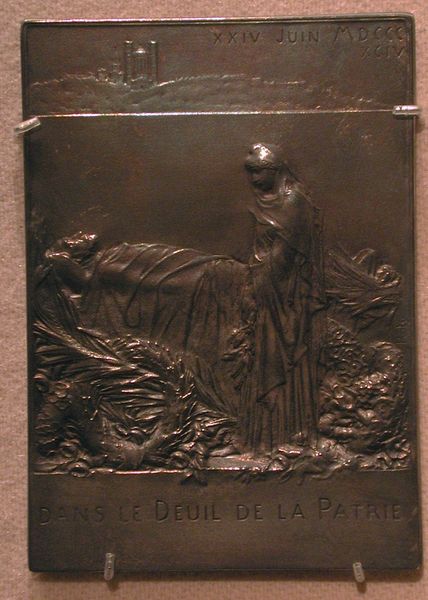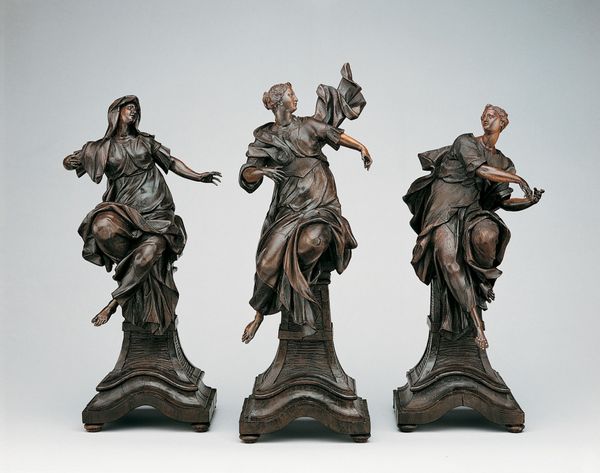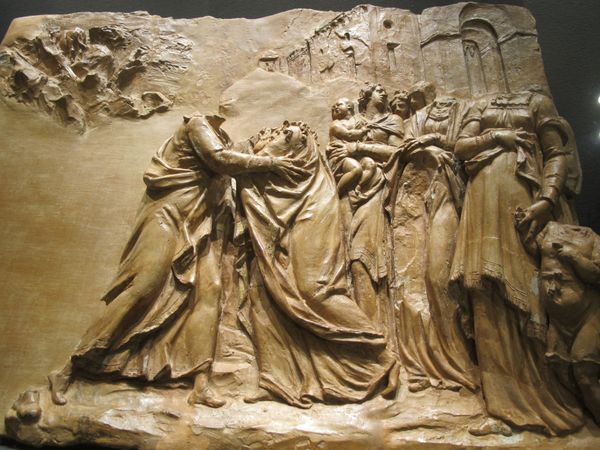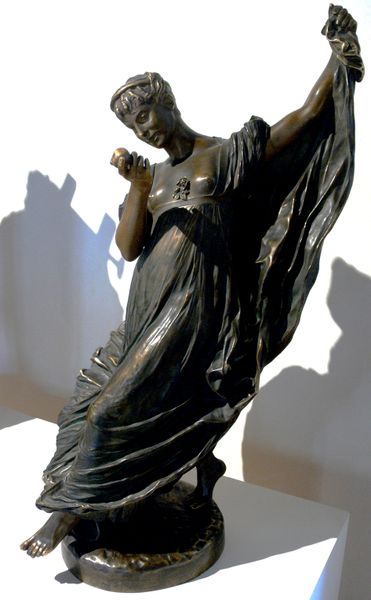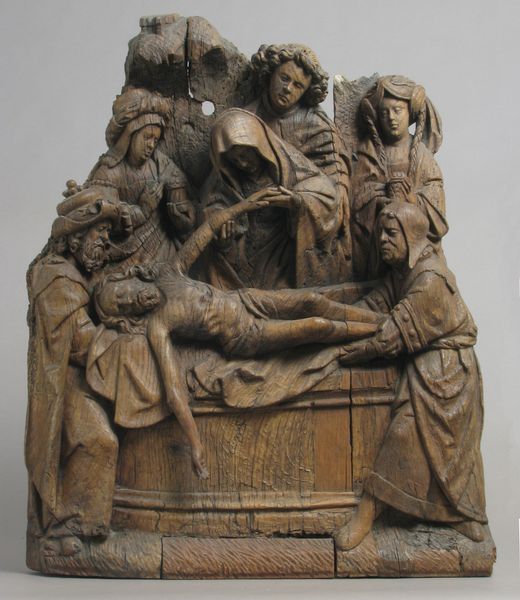
bronze, sculpture
#
statue
#
sculpture
#
war
#
bronze
#
sculptural image
#
figuration
#
sculpture
#
group-portraits
#
symbolism
#
history-painting
#
statue
Copyright: Public domain
Editor: Here we have Auguste Rodin's "The Burghers of Calais," cast in bronze around 1895. It's this powerfully raw representation of sacrifice...What can you tell me about this sculpture? Curator: Let’s look at the bronze itself. The rough texture, almost unfinished, speaks to the brutal realities of war and the physical toll on these men. It emphasizes labor – the labor of the sculptor mirroring the anguish of the burghers. Notice how the individual figures, though unified by the bronze, are distinct in their posture and expressions? Editor: Yes, I see how the texture seems to amplify their emotions. How did Rodin's choice of bronze change our perception of the group portrait, traditionally reserved for nobility and high society? Curator: Exactly. Rodin elevates these ordinary citizens facing dire circumstances to a heroic status usually granted to leaders. But consider also the *process* of bronze casting in the late 19th century. The industrial labor necessary to realize this intensely *human* drama… Is it contradictory or fitting? How does that impact our viewing experience? Editor: That's a compelling question. Perhaps the industrialized creation mirrors the impersonal forces at play during wartime, stripping the individual of agency even in a moment of sacrifice. Curator: Precisely! We can also think about the cost of bronze and where it was sourced from in France at that moment in time. Consider who gets to make art about war and how labor informs their stories. Editor: I had never considered that production angle! Thanks for pointing that out. I definitely see more of that dialogue embedded in the artwork now. Curator: Indeed, materiality can often tell a story as profoundly as the subject it portrays.
Comments
No comments
Be the first to comment and join the conversation on the ultimate creative platform.
